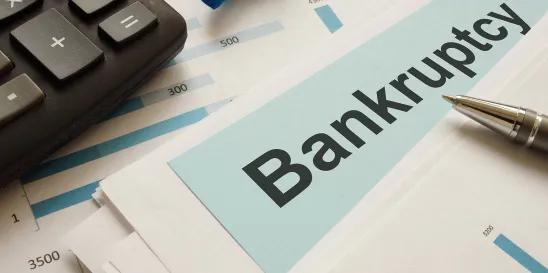The overwhelming majority of my practice has involved larger, complex Chapter 11 cases and out-of-court restructurings, representing debtors, Chapter 11 trustees, committees, or creditors. However, with the expansion during Covid of the Subchapter V debt limit to $7.5 million, I have found myself participating in multiple Subchapter V cases as counsel to creditors. I discovered quickly that habits developed in larger Chapter 11 cases do not necessarily translate to Subchapter V. Below, I will share some tips in representing creditors in Subchapter V cases that will be useful to all attorneys new to the Subchapter V arena, even those, like me, with prior Chapter 11 experience.
When Subchapter V came to be, I honestly did not think that I would have the opportunity to participate in those types of cases due to the debt limitations imposed by statute. However, I have enjoyed multiple opportunities to participate in Subchapter V cases on behalf of creditors and other interested parties. I have come to appreciate the unique challenges that Subchapter V presents the non-debtor parties-in-interest. These cases can proceed quickly, and they are not always small “mom and pop” situations.
The following tips are obviously not intended to be legal advice, nor an exhaustive list of legal issues present in Subchapter V cases. It is also not intended to be a playbook for every creditor in a Subchapter V case. However, there are, I believe, some major differences in Subchapter V that may (and I emphasize the “may”) cause counsel to proceed differently than what counsel would do in a more complex Chapter 11 case.
Tip Number 1: Absolutely Attend The 341 Meeting
Creditors in a standard Chapter 11 case often elect not to participate in the 341 meeting. The assistant US Trustees are oftentimes reluctant to allow prolonged questioning due to the number of parties and counsel involved. There are generally many opportunities (and more time) after the 341 meeting for a single creditor to seek discovery. Subchapter V cases, however, move to plan confirmation quickly by design. Some jurisdictions and judges even have Subchapter V procedures to facilitate an expedient resolution to the case.
Put simply, the 341 meeting may be a relatively inexpensive opportunity to obtain testimony from the debtor representative, which can be useful in protecting your client’s rights (such as by filing a Subchapter V designation objection, plan objection, stay relief, or other motions). You should ask as many questions as the assistant US Trustee assigned to the case will allow and order the transcript immediately following the 341 meeting. Here are some topics to consider exploring at the 341 meeting:
- The debtor’s historic business activity and its activity as of the petition date, including litigation and liquidation activity (if applicable).
- Events leading up to the debtor’s bankruptcy.
- The nature of the claims against the debtor.
- The debtor’s ownership, management, and other responsible parties.
- The debtor’s corporate governing documents and meetings of directors/members.
- The debtor’s flow of funds, bank accounts, and account signatories.
- The debtor’s finances and bookkeeping, including tax returns.
- The debtor’s plan to exit bankruptcy.
- Plan projections.
- The source and amount of funding to administer the bankruptcy and the plan.
Tip Number 2: Consider The Validity Of The Designation
Due to the significant advantages Subchapter V presents, a debtor is incentivized to designate its case as a Subchapter V, even when it does not actually qualify. The general consensus in the case law is that the debtor has the burden to demonstrate eligibility, but it is on the creditor to assert the objection. For most cases, as stated by Bankruptcy Rule 1020(b), the objection to a debtor’s designation under Subchapter V is due within 30 days after the conclusion of the 341 meeting.
The timing of this deadline underscores the importance of asking questions at the 341 meeting. Using information filed in the case as well as information obtained at the 341 meeting, creditors should analyze whether the debtor is a “small business debtor” under the Bankruptcy Code that qualifies as a Subchapter V debtor. This will presumably include analyzing the nature of the debtor’s liabilities (whether they are commercial), and whether the debtor engaged in commercial or business activity as of the petition date.
Tip Number 3: Analyze The Plan To Understand How The Debtor Will Spend Money Post-Confirmation
Subchapter V plans are simple and straightforward. Notwithstanding the advantages a debtor has in a Subchapter V scenario, a debtor must demonstrate that the plan is confirmable with evidence. In addition to the treatment proposed in the plan, creditors should pay particular attention to the debtor’s projections supporting the plan. For example, are the projections supported by evidence to demonstrate feasibility? Is “projected disposable income” under section 1191(c) grounded in fact and supported by evidence (for example, expenses used in the disposable income calculation)? How do the projections compare to historical results? How will the debtor be monitored after confirmation? Are there sufficient mechanisms in place to ensure the debtor adheres to the plan after confirmation (for example, should there be reporting to creditors post-confirmation)? Furthermore, be sure to submit a ballot if your client rejects the plan. Recent case law suggests that a class without any votes may not be considered for purposes of section 1129(a)(8).
Tip Number 4: Monitor The Debtor After Confirmation
Unlike the standard Chapter 11 case, creditors likely will not have the benefit of an oversight committee or fiduciary to ensure that the debtor complies with the plan. Under section 1183(b)(4), the Subchapter V trustee is responsible for ensuring that the debtor commences making timely payments under a plan, but that does not necessarily mean that there will be consistent monitoring of the debtor post-confirmation. In some situations, it may be advisable for the creditors themselves to monitor the debtor following confirmation to ensure that the debtor continues to comply with the terms of its confirmed plan.
Tip Number 5: Assert Your Rights
It is imperative that creditors assert their rights as quickly as possible. Creditors should not assume that other interested parties, including the Subchapter V trustee, will object to the Subchapter V designation, contest confirmation of the plan, or otherwise substantively inject themselves into the proceedings. The Subchapter V trustee is a useful resource to help find a path towards a consensual Subchapter V plan and may act as a mediator of disputes, but that does not make the Subchapter V trustee a watchdog for all creditors’ interests.
In conclusion, Subchapter V’s streamlined procedures make it important that creditors and their counsel quickly take a proactive role in the case to protect their interests. Notwithstanding the accelerated timeframe and unique nuances of Subchapter V, creditors can ask targeted questions at the 341 meeting, examine whether a debtor properly designated itself as a Subchapter V debtor, analyze the plan, and otherwise advocate their interests both during and after confirmation.




 />i
/>i
